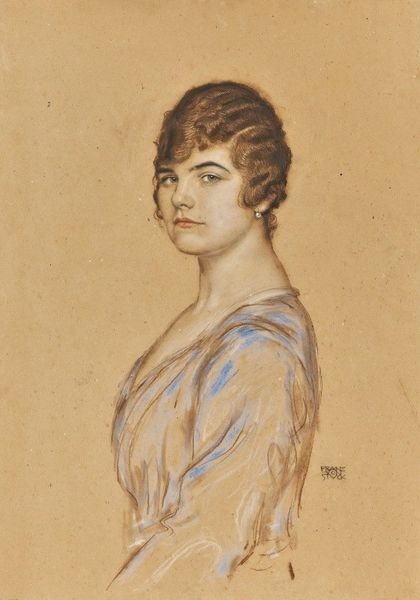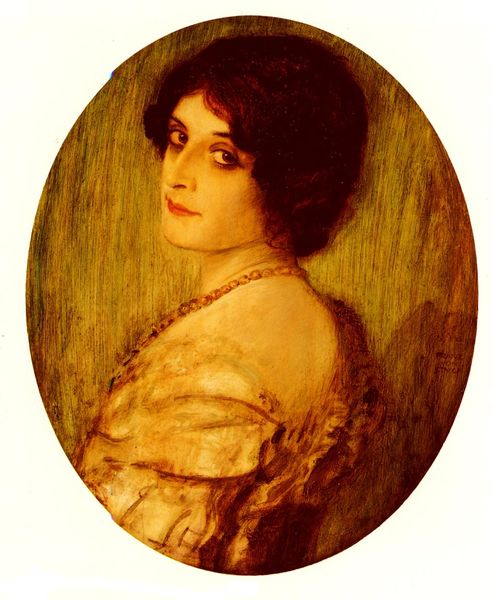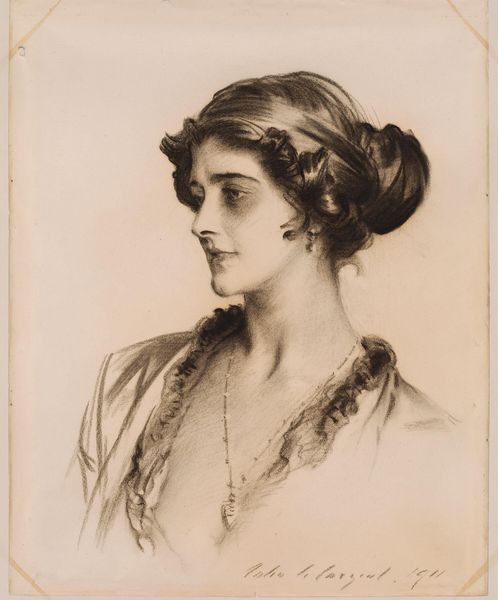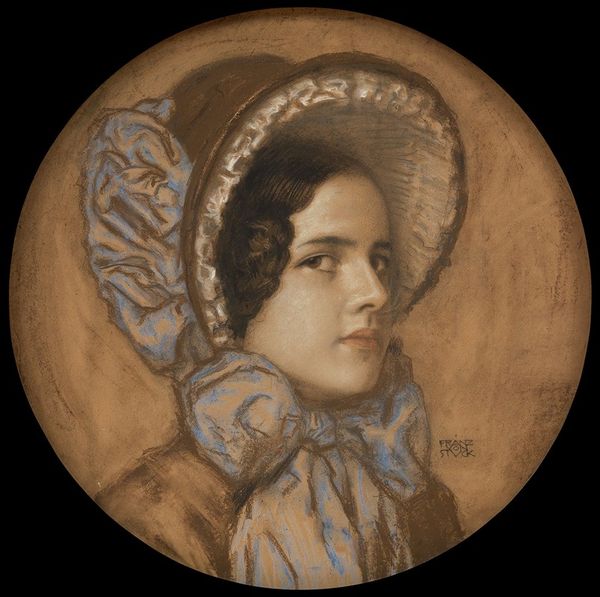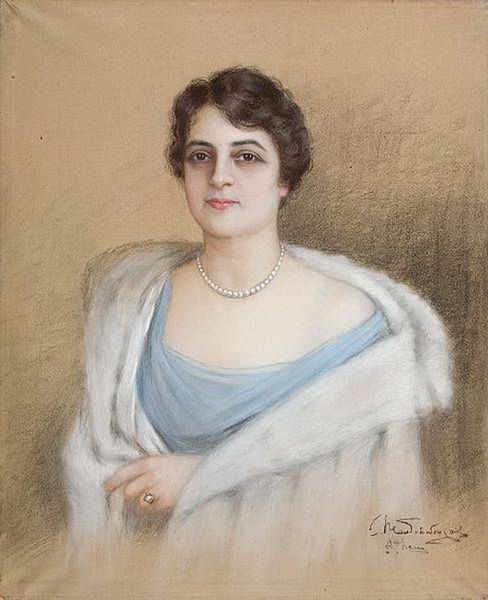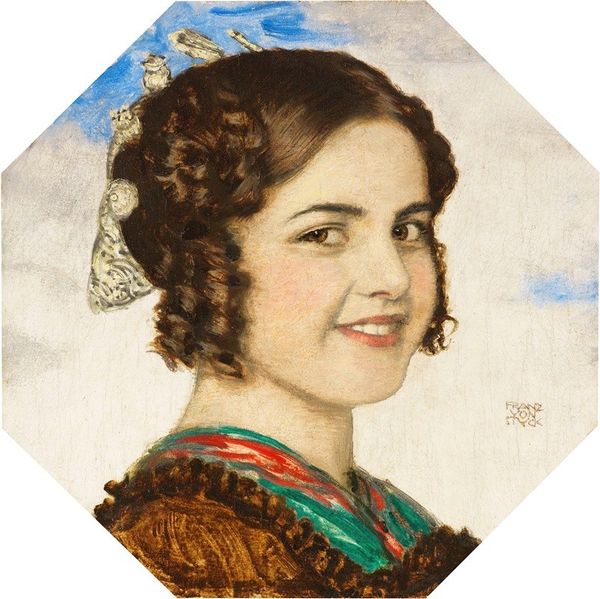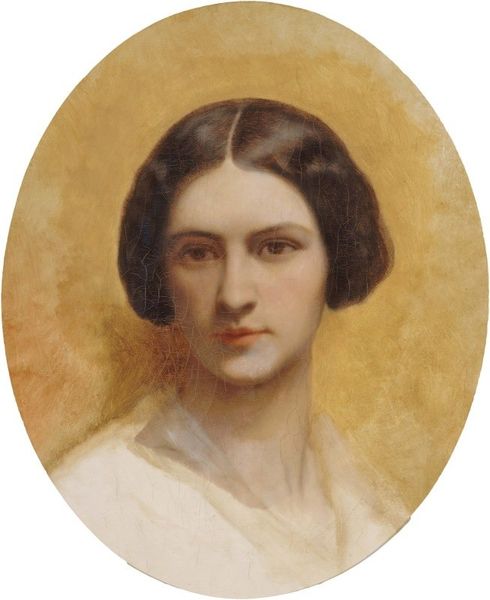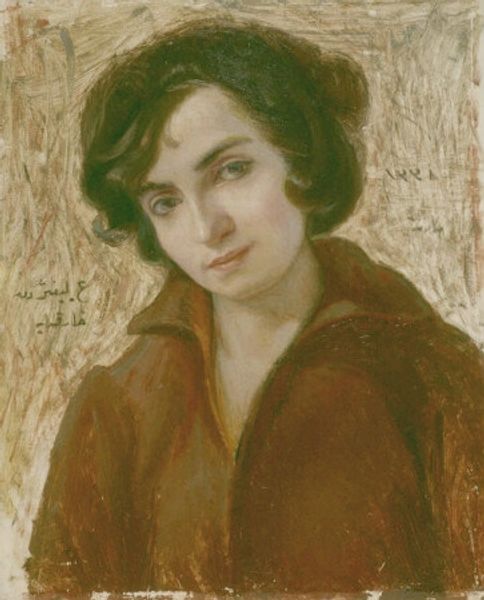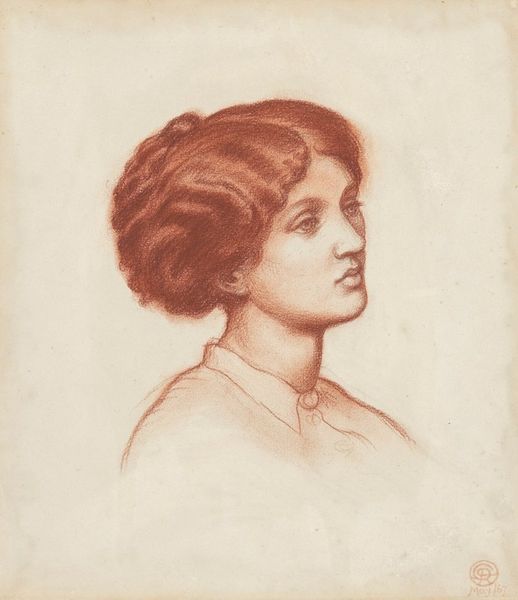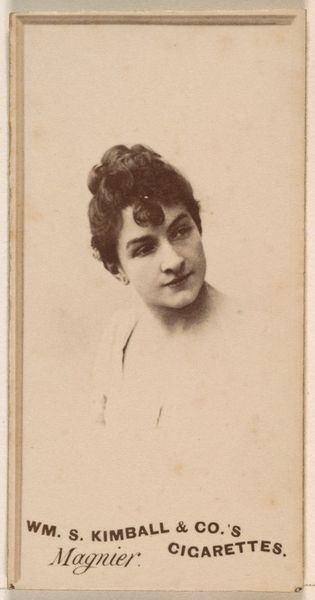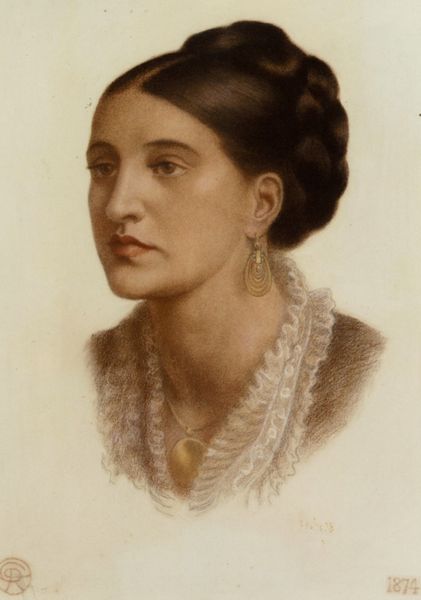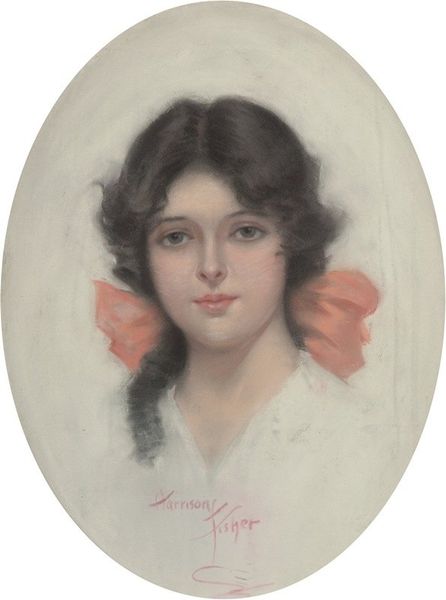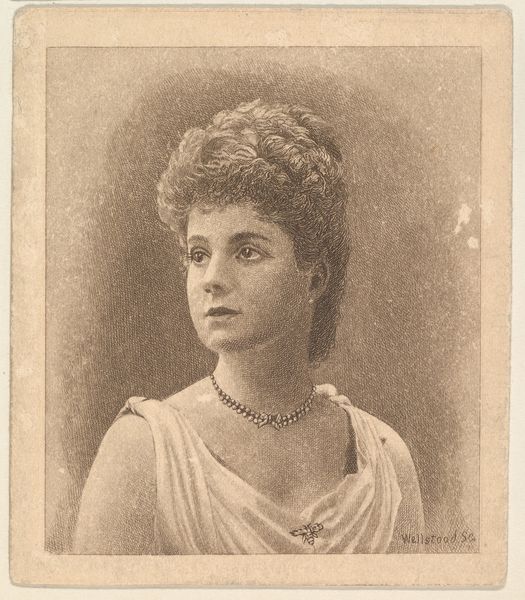
drawing, pencil, pastel
#
portrait
#
drawing
#
figurative
#
facial expression drawing
#
art-nouveau
#
portrait reference
#
portrait head and shoulder
#
pencil
#
symbolism
#
animal drawing portrait
#
portrait drawing
#
pastel
#
facial portrait
#
portrait art
#
fine art portrait
#
celebrity portrait
#
digital portrait
Copyright: Public Domain: Artvee
Curator: Franz von Stuck's "Bildnis der Tochter Mary," created in 1912 using pastel and pencil, depicts his daughter in a fairly conventional head-and-shoulders portrait. Editor: I see. The portrait is so poised, but the shading around her eyes and brow gives her such a strong and intense look. How do you interpret this work within the artistic landscape of the early 20th century? Curator: I think it is crucial to consider the sociopolitical context in which von Stuck created this portrait. Early 20th century art grappled with shifting identities, challenging conventional portrayals, especially of women. Here, the intense gaze might be seen as a sign of defiance against societal norms imposed on women. What does her direct eye contact communicate to you? Editor: It makes me wonder about female representation in portraits in that time period. Is it meant to convey vulnerability, confidence, or something else entirely? Did von Stuck's relationship with his daughter influence the choices he made in her representation? Curator: Absolutely. The personal undeniably informs the political. Consider the formal elements: the soft pastel shades contrast with the boldness of her features, creating an ambiguity that perhaps reflects the complexities of womanhood at the time. Think about Art Nouveau, too. The lines in the robe almost cage her, but in this portrait, we see both the idealized beauty and her defiance, a fascinating interplay between confinement and resistance. Editor: That is fascinating! I did not realize how many layers there could be in a portrait. Curator: Precisely. It is in that tension, the play between personal experience and larger cultural forces, that we unlock the richness of this work. Seeing “Mary” as both an individual and a symbol expands our understanding. Editor: It's fascinating to consider a father's perspective, portraying his daughter amid a time of evolving gender roles. Curator: It is precisely these types of historical layers which invite contemporary audiences to reimagine established meanings in artworks.
Comments
No comments
Be the first to comment and join the conversation on the ultimate creative platform.
